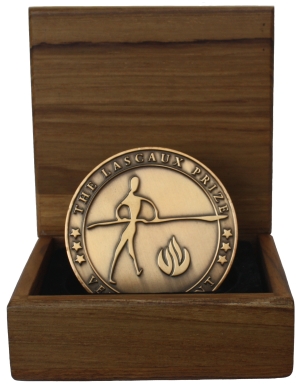
“The Repentant Magdalen,” oil on canvas, by Georges de La Tour, c. 1640.
Stare at your reflection in the storefront window. She looks familiar, you think. Tilt your head and search her face, browse for details that resemble the old you. Wonder where she is now and who this might be.
Stand in the aisle at the thrift store you often visit. On this day you have a Choose Joy mug in your hand, priced at $.45. Not much for joy. Take it home and fill it with hot ginger tea that’s supposed to be medicinal. The first sip is soothing, but lately you’re only borrowing warmth.
Watch a fish flail on a pier and note how it gulps air in search of oxygen. Realize that this is how you sleep now, your body moving itself without your knowledge, trying to swim in the absence of water.
Contract an odd case of situational color blindness. Somehow, black and blue look exactly the same. Violet and pink could be twins. Your shoe rack is a confusion of indoor and outdoor. On Monday, show up at the office looking like a bruise shuffling down the hallway in gardening clogs. Nobody says anything, but people are bad at this, and besides, you haven’t told them what happened.
And then, spend a lot of time waiting. For what, you don’t know. The next thing, you suppose. The one that will tip you either toward or away from the abyss you seem to be walking the edge of and staring into, no matter where you are.
Maybe start preparing easily digestible foods. Find there’s something mesmerizing about chopping and sautéing, watching the quinoa turn translucent, inhaling the aromatics; yet, you’re unable to lift the end results to your mouth. It all looks like aquarium gravel and your thoughts are flying in a holding pattern nowhere near this moment. And besides, you’re gorged on sorrow.
When people ask, “How are you?” as they walk by, you cannot answer fine or good. Anguished or dislocated are not acceptable responses. Disassembled feels accurate, but it’s too clumsy to say and then somehow keep moving. Nobody wants to tote the muddled bulk of your grief for you or listen to the volume of it, and neither do you.
Consider that you might never diverge from this state of being. This is who you are now: a voiceless contusion wandering aimlessly in and out of limbo.
After what seems like years, and—it turns out—have been actual years, open the hall closet with an indefinite sense of purpose. Pull out the muslin bag, the one that contains hundreds of photos of you and the deceased. Flip through them like some kind of robot and decide, with alarming speed, that most of them can be tossed. Keep only 10.
Here is one of the two of you at the lake you’ve forgotten the name of. This is how you look: not at the camera, but at the person taking your picture. Your adoration could not be more clear. Here is another—same place/same day/three minutes later—of the deceased looking at you with the exact same expression. Try to make sense of where you are now, while holding proof of otherwise in your hands.
And then, one luminous day, in the last quarter mile of your longest, long walk, you startle a blue heron, and the shadow of its wingspan somehow crushes you. Your torment implodes. In seconds you’re weeping directly onto the rock fines, your palms smeared with grey dust. Try to remember how to swallow so you can resume breathing,
Lay awake that night, and don’t resist when a flinty nostalgia mingles your thoughts into a flat dish of glass beads. Listen to the breeze from the small fan next to your bed and follow along, unsurprised by how easy it is to find yourself headfirst inside a kaleidoscope. This makes sense to you, somehow, that you can look through the eyepiece even though your body is blocking the reflective surfaces. What appears next is a simple map on the wall of all your good intentions, colorful pushpins stuck in key intersections, brass thumbtacks smooth against emotional sinkholes. And when you rotate the dish of beads, you’re aware you can’t control the way they reposition themselves, but you still want to see what happens.
In the morning, try this: envision leaving the mortuary parking lot, the corrugated box labeled Processed Remains sitting in the passenger seat. You can see it now. There is so much of her gone and so much of you adrift. Reach over and loop the seatbelt around her, as if she simply forgot to do it herself. It’ll take twice before it clicks.
You heard once that UPS drivers make only right turns to save time. Research has shown it works. Scan the oncoming traffic moving in one direction. It seems each car passes you with only one person in it, unless there’s someone you’re missing. Keep waiting to turn left.
Christiana Louisa Langenberg is the author of the bilingual collection of stories Half of What I Know. Her second collection of stories, Here is What You’ll Do, was a finalist in the Flannery O’Connor Award for Short Fiction. She is the recipient of the 2019 Barry Lopez Nonfiction Award, the 2015 Louisville Literary Arts Prose Prize, the Drunken Boat Panliterary Award for Fiction, the Chelsea Award for Short Fiction, and multiple Pushcart Prize nominations. Her stories and essays have been published in Passages North, The Huffington Post, Glimmer Train, Dogwood, New South, and elsewhere. She teaches in the English Department and Women’s and Gender Studies Program at Iowa State University.



